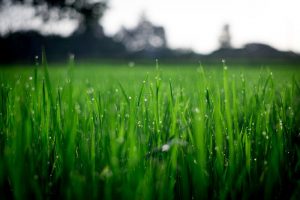How to Bring Your Yard Back to Life After a Harsh Winter
What Does Harsh Winter Weather Do to a Home’s Lawns?
 After a harsh winter season, your home’s lawn may look like it has reached its final days with it’s dry brown grass and feeble shrubs or trees. Throughout the winter, your lawn’s soil will freeze and thaw repeatedly all while damaging the roots of the grass, trees, and shrubs. Some plants will revive quickly when spring arrives, but you may need to help many of the plants with a variety of lawn treatments. In addition, if you inspect the trees and shrubs on your lawn and notice that you are missing a couple of branches, or come across some that are broken, you will need to treat them in order for the tree to be revived in time for summer. Begin by removing the dead branches and piles of leaves from your lawn. It’s important to use the proper tools to trim away the drooping branches so that you don’t damage any additional branches. If these tasks are too strenuous for you to perform, then you can hire an expert to help you with the process.
After a harsh winter season, your home’s lawn may look like it has reached its final days with it’s dry brown grass and feeble shrubs or trees. Throughout the winter, your lawn’s soil will freeze and thaw repeatedly all while damaging the roots of the grass, trees, and shrubs. Some plants will revive quickly when spring arrives, but you may need to help many of the plants with a variety of lawn treatments. In addition, if you inspect the trees and shrubs on your lawn and notice that you are missing a couple of branches, or come across some that are broken, you will need to treat them in order for the tree to be revived in time for summer. Begin by removing the dead branches and piles of leaves from your lawn. It’s important to use the proper tools to trim away the drooping branches so that you don’t damage any additional branches. If these tasks are too strenuous for you to perform, then you can hire an expert to help you with the process.
Checking for Grass Damage and Fixing the Problems
You may notice brown patches of grass covering the majority of your lawn as the spring season progresses. While some areas of grass will revive on their own despite a long harsh winter, there are places where the grass may need additional care. Begin by raking or scarifying the soil to aerate it. This process will help to remove any weeds, moss or other debris that is growing or that has collected on the top of the soil. The holes and scratches in the soil also make it easier for fertilizer and plant foods to trickle deeper into the earth.
How Do You Fertilize a Lawn Correctly?
If you’re unsure where to even begin, start calling an expert for testing. The application of fertilizers works better when you water the soil a day or two before, but you can also wait until after it rains. After the grass is dry, it is best to use special equipment to apply the fertilizer, or alternatively, you can add the fertilizer by tossing it with the soil by using a shovel. Once the fertilization process is over, it is time to water your yard again. Experts recommend fertilizing your lawn at the beginning of spring and then again in the summer. Throughout the growing season, you may need to add more ‘plant food’ to your lawn to maintain the growth of the grass, or you can hire an expert to perform these scheduled tasks.
Planting Grass Seed
If you have lost a lot of grass due to inclement weather or if your lawn was previously mistreated by the owners prior, you will need to add seed to the soil. Determine what type of grass seed is best for your geographic region, or you can choose the same type of grass seed that is currently growing on the other parts of your lawn.
Preventing Infestation from Grubs and Insects
Depending on your geographic location, you will have a variety of lawn pests to fight off. Today, you can often find a photograph of a pest on the internet with an online search, but you can also use experts to identify and take care of the pest.
Begin Mowing Your Lawn After the Grass is Healthier
After having your lawn fertilized you can water the lawn when the soil is dry. If it is raining frequently, then you might not need to do this as often. However, in the peak of summer when the days are long and the temperatures are high – it will be crucial to water your lawn often. It is best to water your lawn early in the morning or late at night rather than during the hottest part of the day. Eventually, you will need to mow the grass, but we would recommend waiting until it is healthy.

